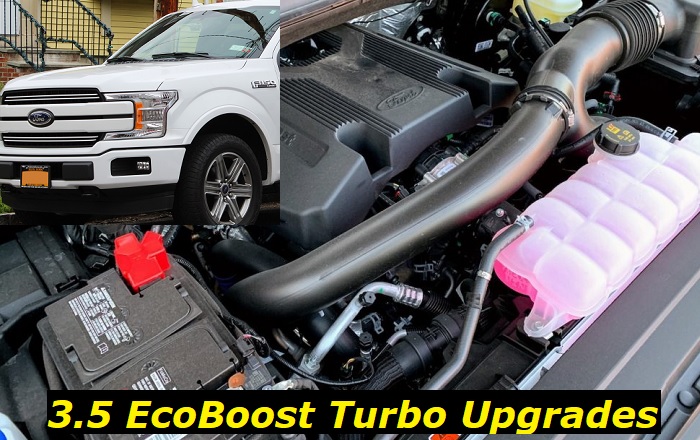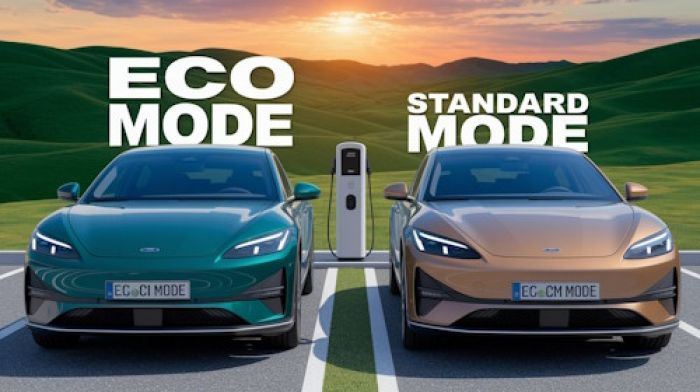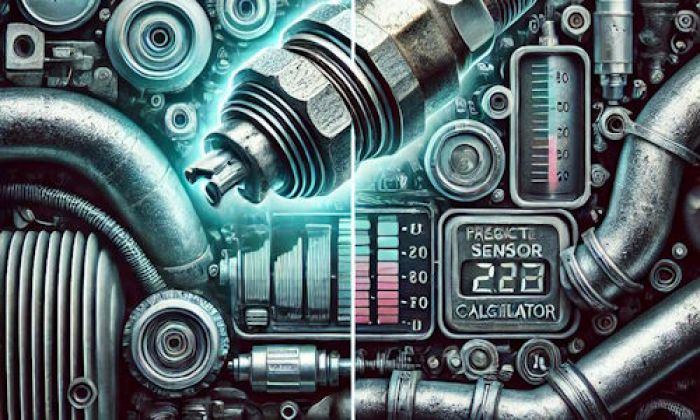The 3.5 L EcoBoost is a twin-turbocharged V6 engine from Ford Motors introduced in 2007 under the name 'Twin Force.' The central idea behind the production of this power unit was to create a solid alternative to a large displacement V8 engine.
Key features and my opinion about the engine
- Production years:2010-now
- Average lifespan of 3.5L EcoBoost:190,000-220,000 miles
- Fuel supply type:direct injection
- Power range:310-660 hp
- Fuel efficiency:average
- Engine block material:aluminum
- Engine reliability score:medium
- The most common problems:intercooler problems, timing chain stretching, carbon buildup on intake valves, coolant and oil leaks.

3.5 EcoBoost Turbocharger Specs
|
Engine |
Ford 3.5 EcoBoost |
|
Configuration |
60° V6 |
|
Displacement |
3496cc, 3.5L, 213 CID |
|
Aspiration |
Twin Turbocharged |
|
Valve train |
DOHC with VCT |
|
Cylinder block material |
Aluminum |
|
Cylinder head material |
Aluminum |
|
Fuel type |
Gasoline |
|
Fuel system |
Direct injection + Port Injection |
|
Number of cylinders |
6 |
|
Valves per cylinder |
4 |
|
Bore |
92.5 mm (3.64 in) |
|
Stroke |
86.6 mm (3.41 in) |
|
Compression ratio |
10.0 : 1 |
|
Power |
320-647 hp (239 - 482 KW)/ 5000 - 6250 |
|
Torque |
350-550 lb-ft (475 - 475 Nm)/ 2250 - 5900 |
|
Firing order |
1-4-2-5-3-6 |
|
Engine oil |
SAE 5W-30, 0w-30, 5w20 |
|
Engine oil capacity |
5.9 L (6.2 qt) with oil filter |
|
Oil change interval |
9000 m ( 15,000 km)/ 12 months |
Ready-to-use Bolt-on Turbo Kits for the 3.5 EcoBoost
EcoBoost is an incredible engine capable of intense performance with some essential upgrades. There are different ready-to-use upgrades for the 3.5 EcoBoost.
These performance upgrades can easily take the engine to 450-550 + hp. A simple bolt-on mod can push the 3.5 EcoBoost to the maximum level. Below are some bolt-on mods that increase the performance of the 3.5L EcoBoost.
1) Ford 3.5L EcoBoost Tuners
Tuners are highly recommended to extract more power from the engine upgrade. A tune can add almost 50-80 hp on the twin-turbo EcoBoost alone, and without a proper tune, other mods would not reach their full potential. Many kinds of tuners exist for different 3.5L EcoBoost engines like the JB4, SCT V4, nGauge, and COBB Accessport.
2) 3.5 EcoBoost Intake Upgrades
Intakes make great mods by coupling with tuners to help aid more airflow. It is also referred to as a cold air intake or air filter upgrade. Intake is a significant, popular upgrade on a lot of engines. The more you push the 3.5 EcoBoost, the more benefits you get from an intake.
There are two kinds of intake; open and closed. Open performance air intake opens the engine's bay while the Closed air intake protects the filter and pulls in cooler air. Several 3.5 EcoBoost intake kits are available, and you must find the right one for your engine.
3) 3.5 V6 EcoBoost Downpipe Mod
Downpipes are undoubtedly one of the best performance upgrades for the 3.5 EcoBoost. It offers more power gain on the engine than any part of the exhaust except for the twin-turbo.
The primary duty of a downpipe is to reduce back pressure, and it also offers benefits like a louder exhaust and a faster turbo spool.
A catted downpipe is preferred for the EcoBoost because it provides a high flow and a pressure drop.
4) 3.5 EcoBoost FMIC Upgrade
A larger Front Mount Intercooler (FMIC) is an incredible bolt-on upgrade. It's a simple solution that reduces the heat-soak of the engine and releases cool air for outstanding performance and power.
The FMIC of large volume and surface area lowers the chances of engine knock by maximizing cooling, saves the EcoBoost from losing power, and ensures consistent performance. Some front mount intercooler upgrades include:
- CVF Titan intercooler (2015-2020)
- Mishimoto Upgrade FMIC
- CVT Atlas FMIC (2011-2014)
- Wagner Tuning performance FMIC
5) 3.5 EcoBoost Methanol Injection
Methanol injection or water-methanol injection system doesn't rely on the standard fuel pump. As a result, it reduces the stress and fuel system demand.
In a situation where the stock fuel system is raised to the maximum, methanol comes to the rescue. A methanol injection can provide 40-60 + hp depending on how much you rely on it.
Maximum Power and Torque You Can Get From Upgrading The Turbocharger in The 3.5 EcoBoost
An upgraded turbocharger in the 3.5 EcoBoost has the maximum power of 500-550 horsepower. Low-end torque will also increase significantly. But too much low-end torque can be pretty harmful to the engine.
An upgraded turbocharger helps the engine retain power and torque on the curve. Pushing the limit of the 3.5 EcoBoost can reduce its reliability and longevity. Still, low-end torque is highly recommended if you insist on going with that.
Problems You Can Get When You Upgrade the Turbo on Your 3.5 EcoBoost
The EcoBoost is undoubtedly an incredible engine, but it can begin to display issues over time when upgraded. Here are some problems associated with the upgrade of the EcoBoost engine.
Carbon Build up
Carbon build-up naturally arises from using a direct-injected engine. Most engines experience some oil blowby due to the oil making its way through the intake tract and binding onto the intake valves.
With time, carbon deposits build up and restrict airflow in the cylinders. The carbon deposit can result in varying air entering the cylinders, which makes the air-fuel mix unbalanced.
Carbon deposits don't cause any severe longevity concerns for the 3.5 EcoBoost. An excess carbon build-up symptoms include:
- Rough idle;
- Misfires;
- Power loss.
Timing Chain Problems
Timing chain problems are one of the rarest upgrade problems to come by. It is mainly known to affect the F-150 3.5 EcoBoost model more than other models.
Even though it's uncommon, we highly recommend that you repair the timing chain on time if the issue pops up. A few symptoms of the timing chain include a cold start rattle, DTC POO16, and drivability issues. Replacing the timing chain isn't cheap, and it's labor-intensive. A timing chain problem can cause a throw-off in the ignition timing and power loss.
Engine Wear and Overheating
When the 3.5 EcoBoost is upgraded to the highest modification, going faster will make the engine use more per mile driven.
Extra stress is on the moving parts of the engine, and that causes it to wear out quickly. And overheating results from the expansion of the cylinder heads due to excess heat from the engine.
Transmission Problems Because of Higher Torque
Higher torque can cause friction damage, overheating, and transmission fluid degradation, leading to damaged transmission. When this happens, the torque will be unable to convert into the hydraulic pressure needed to shift the transmission gears.
Poor Turbocharger Oiling After Upgrade
Failing to oil the turbocharger after upgrade can make the shaft snap resulting in the uncontrolled explosion of turbine wheels and compression. The more the turbocharger is left without oiling, the more the engine is predisposed to intense damage.
Spark Plug and Ignition coil Issues
Spark plugs and ignition coil issues commonly arise from a twin-turbocharged direct-injected engine.
Due to the incredibly high cylinder pressure, turbochargers put a lot of stress on the ignition system. Ignition coils usually last about 140000 + miles on naturally aspirated engines, while the spark plugs last for nearly half of that.
When the turbo is upgraded, the 3.5 EcoBoost will probably require new spark plugs every 10000 miles and ignition coils every 25000 miles. This upgrade shortens the lifespan of the ignition coils drastically.
Symptoms of spark plug and ignition coil issues include a misfire code and rough idle stuttering. If it's been a long while since your spark plugs and ignition coils were charged, you should consider replacing them.
It's pretty easy and cheap to repair, so anyone with little experience in car repair can accomplish it in less than an hour or two.
Why You Might Want to Upgrade the Turbocharger of the 3.5 EcoBoost?
The maximum airflow can determine a turbocharger's utmost performance. As the 3.5 EcoBoost performance and fueling levels are increased through modifications like air intake and exhaust improvements, the turbo has to work harder to provide the same boost.
A turbocharger starts losing efficiency and durability while causing unnecessary damage when it is at its power limit. If you need to maximize the performance and power of your vehicle, then upgrading the turbocharger to a better model might be what you need. A good number of reasons why you should want to upgrade the turbocharger include:
Improved Drivability
If you're a car performance enthusiast, upgrading the turbocharger is an incredible way to push your vehicle's performance while having fun.
Competition Use
Getting an upgrade can significantly improve your vehicle's straight-line speed and responsiveness.
Improved Towing
This is a practical advantage to upgrading the turbocharger of the 3.5 EcoBoost. It offers a great solution in giving you the additional power you want in towing a vehicle.
Conclusion
As you can see, there are several benefits to this upgrade. And if you're still on the fence on whether it's the right move to make, now you can analyze all the good and bad sides to decide it for you.
About the authors
The CarAraC research team is composed of seasoned auto mechanics and automotive industry professionals, including individuals with advanced degrees and certifications in their field. Our team members boast prestigious credentials, reflecting their extensive knowledge and skills. These qualifications include: IMI: Institute of the Motor Industry, ASE-Certified Master Automobile Technicians; Coventry University, Graduate of MA in Automotive Journalism; Politecnico di Torino, Italy, MS Automotive Engineering; Ss. Cyril and Methodius University in Skopje, Mechanical University in Skopje; TOC Automotive College; DHA Suffa University, Department of Mechanical Engineering






Add comment